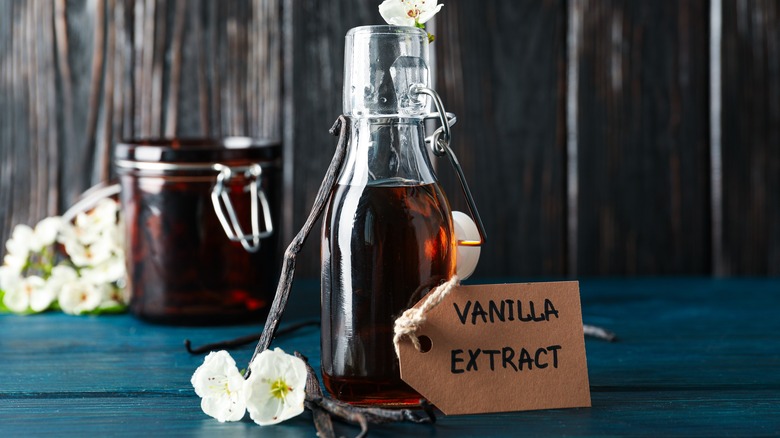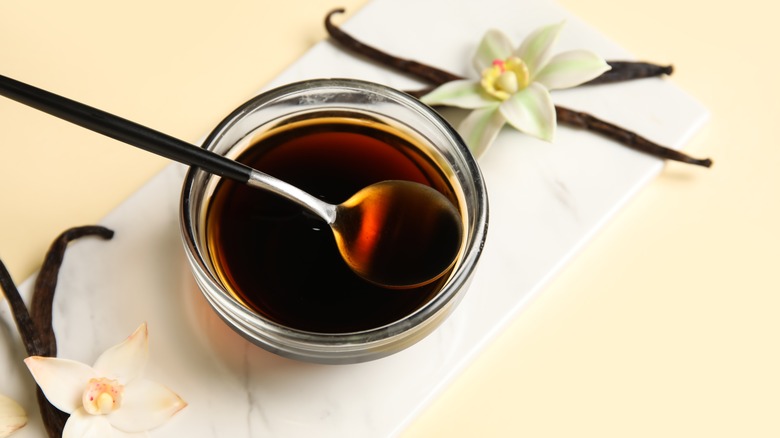How Can You Tell If Vanilla Extract Is Real?
Vanilla extract (which is not the same as vanilla bean paste) is among the most imitated and adulterated food items in the world, right alongside saffron, honey, maple syrup, wasabi, and parmesan. Real vanilla extract is made from vanilla beans — those slim pods that come from the vanilla planifolia orchid, cultivated in countries like Madagascar, Indonesia, and Mexico. These pods contain vanillin, a naturally-occurring compound that gives vanilla its delicious flavor. However, nearly 99% of the "vanilla extract" in the world doesn't come from this plant. Instead, it's made from synthetic chemicals concocted in labs (often from a base of petrochemicals) which only mimic real vanillin.
So, how do you know if the extract that you're adding to your vanilla ice cream recipe is the real deal? Well, the most telltale sign is its ingredients list. Pure vanilla extract is made using only three ingredients: vanilla beans, water, and alcohol to extract the flavor out of the pods. In fact, according to the FDA, products labeled "vanilla extract" must be at least 35% alcohol and should have a minimum of 100 grams of vanilla beans per liter.
That being said, the FDA does allow additional ingredients such as corn syrup, sugar, and dextrose in vanilla extract, as well. So if you're looking for a bottle of absolutely pure vanilla, you'll want to closely examine the ingredients rather than putting all the stock in the name of the product.
The signs of imitation vanilla extract
Another sign of real vanilla extract is its price tag. Vanilla is the most expensive spice in the world after saffron (whose prices are only getting higher due to a global shortage), and a single pod can go for $2 to $3. As a result, authentic extract is equally expensive. A one-ounce bottle of vanilla extract costs about $6, whereas imitation ones go for as little as $0.10 to $0.30. So, if you spot a cheap bargain on extract that seems too good to be true — well, it probably is. Also be wary of bottles that are labeled as anything other than vanilla extract or "extract of vanilla," or use terms like "flavoring" and "essence."
Moreover, pure vanilla extract — the kind that has no sugar and syrups — has an indefinite shelf life when stored well. You'll even find that the liquid gets sweeter and naturally loses its bitterness as it ages. When in doubt of whether or not you have a high-quality product on hand, you can always taste the extract, too. If it has an intense but straightforward vanilla flavor, it's likely not real. Synthetic vanillin has stronger notes of vanilla, but it is one-dimensional. Pure extracts have vanillin too, of course, but they also contain dozens of other flavor compounds. This gives them a more complex profile with an array of subtle flavors besides just vanilla. Plus, real vanilla extract will also have a boozy flavor thanks to the alcohol inside — something you won't always find in imitation versions.


